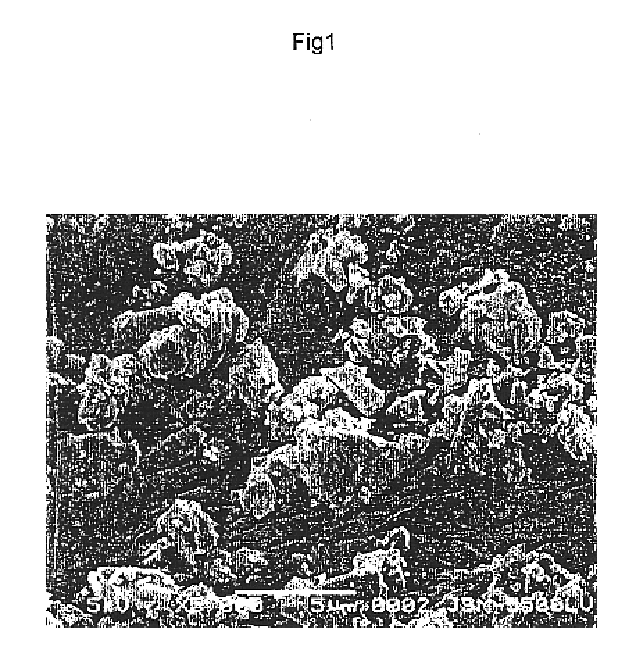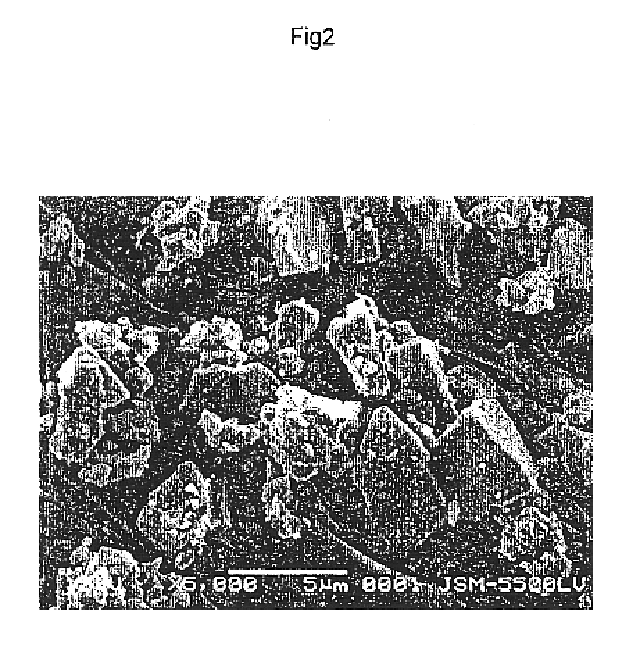Antibacterial glass and method for production thereof
- Summary
- Abstract
- Description
- Claims
- Application Information
AI Technical Summary
Benefits of technology
Problems solved by technology
Method used
Image
Examples
example 1
1. Production of Antimicrobial Glass
i) Melting Step
Assume a total amount of the antimicrobial glass (A composition) as 100 weight %, respective glass raw materials are agitated until these raw materials are uniformly mixed using a universal mixer under conditions that the mixer is operated at a rotational speed of 250 rpm for 30 minutes such that the composition ratio of P.sub.2 O.sub.5 assumes 50 weight %, the composition ratio of CaO assumes 5 weight %, the composition ratio of Na.sub.2 O assumes 1.5 weight %, the composition ratio of B.sub.2 O.sub.3 assumes 10 weight %, the composition ratio of Ag.sub.20 assumes 3 weight %, the composition ratio of CeO.sub.2 assumes 0.5 weight %, the composition ratio of ZnO assumes 30 weight %. Subsequently, using a melting furnace, the glass raw materials are heated under conditions of 1280 degree centigrade for three hours and a half so as to produce a glass melt.
ii) Water Granulating Step
The glass melt taken out from a glass melting furnace i...
example 2
An antimicrobial glass having the similar glass composition (A composition) of the example 1 and formed of a polyhedron and having an average particle size of 10 .mu.m is prepared and is evaluated. The obtained result is shown in Table 1.
examples 3 to 5
An antimicrobial glass having the similar glass composition (A composition) of the example 1 and formed of a polyhedron and having an average particle size of 10 .mu.m is prepared. Subsequently, in the fine grinding step, ZnO having an average particle size of 0.3 .mu.m is added at addition amounts of 8 weight %, 2.7 weight % and 2.1 weight % respectively thus producing antimicrobial glasses containing externally deposited particles of the examples 3 to 5 and these glasses are evaluated. Obtained results are shown in Table 1.
PUM
| Property | Measurement | Unit |
|---|---|---|
| Fraction | aaaaa | aaaaa |
| Fraction | aaaaa | aaaaa |
| Fraction | aaaaa | aaaaa |
Abstract
Description
Claims
Application Information
 Login to View More
Login to View More - R&D
- Intellectual Property
- Life Sciences
- Materials
- Tech Scout
- Unparalleled Data Quality
- Higher Quality Content
- 60% Fewer Hallucinations
Browse by: Latest US Patents, China's latest patents, Technical Efficacy Thesaurus, Application Domain, Technology Topic, Popular Technical Reports.
© 2025 PatSnap. All rights reserved.Legal|Privacy policy|Modern Slavery Act Transparency Statement|Sitemap|About US| Contact US: help@patsnap.com


